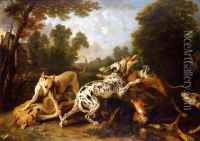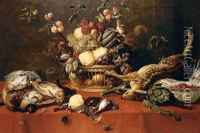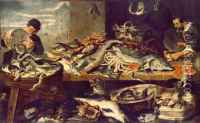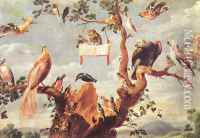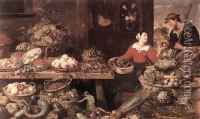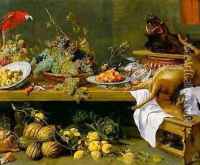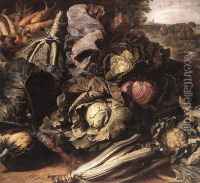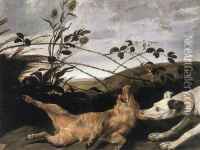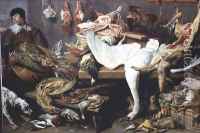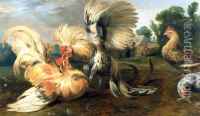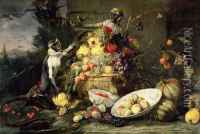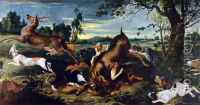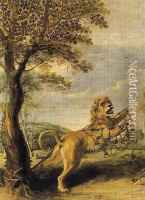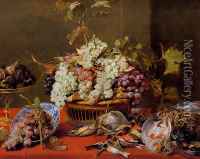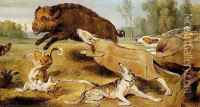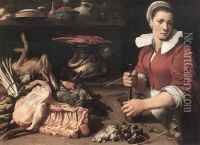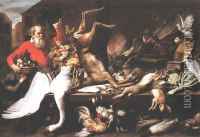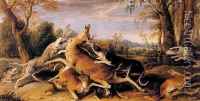Frans Snyders Paintings
Frans Snyders, born in Antwerp in 1579, was a prominent Flemish painter known for his mastery in painting animals, hunting scenes, and still lifes, particularly featuring fruits, vegetables, and flowers. His work is emblematic of the Baroque period, characterized by its vivid detail, dynamism, and vibrant colors. Snyders initially studied under Pieter Brueghel the Younger and later, Hendrick van Balen. His talent was recognized early in his career, leading to a lifelong collaboration with Peter Paul Rubens, another titan of Flemish art. Together, they created dynamic compositions, with Snyders often responsible for the animals and still life elements in Rubens' paintings.
Snyders' skill in depicting the texture and form of various subjects, from the fur of animals to the skin of fruits, was unmatched. He had a profound influence on the development of still life and animal genre painting in Flanders and beyond. His works were highly sought after by the elite and aristocracy across Europe, reflecting the era's fascination with nature and the exotic.
Beyond his partnership with Rubens, Snyders was known for his large-scale hunting scenes, which were unprecedented in their complexity and vitality. These works not only showcased his ability to capture the ferocity and motion of animals but also reflected the social and cultural significance of hunting during the 17th century.
Snyders was not just a painter but also a successful businessman and art collector, deeply involved in the artistic community of Antwerp. He was a respected member of the Guild of St. Luke, and his home became a gathering place for artists, patrons, and scholars. His influence extended through his teaching, with several prominent painters among his pupils, ensuring his techniques and vision would permeate future generations.
Frans Snyders died in Antwerp in 1657, leaving behind a legacy that significantly contributed to the richness of Baroque art. His works continue to be admired for their technical prowess, their vibrant embodiment of Baroque spirit, and their detailed portrayal of nature and life.
